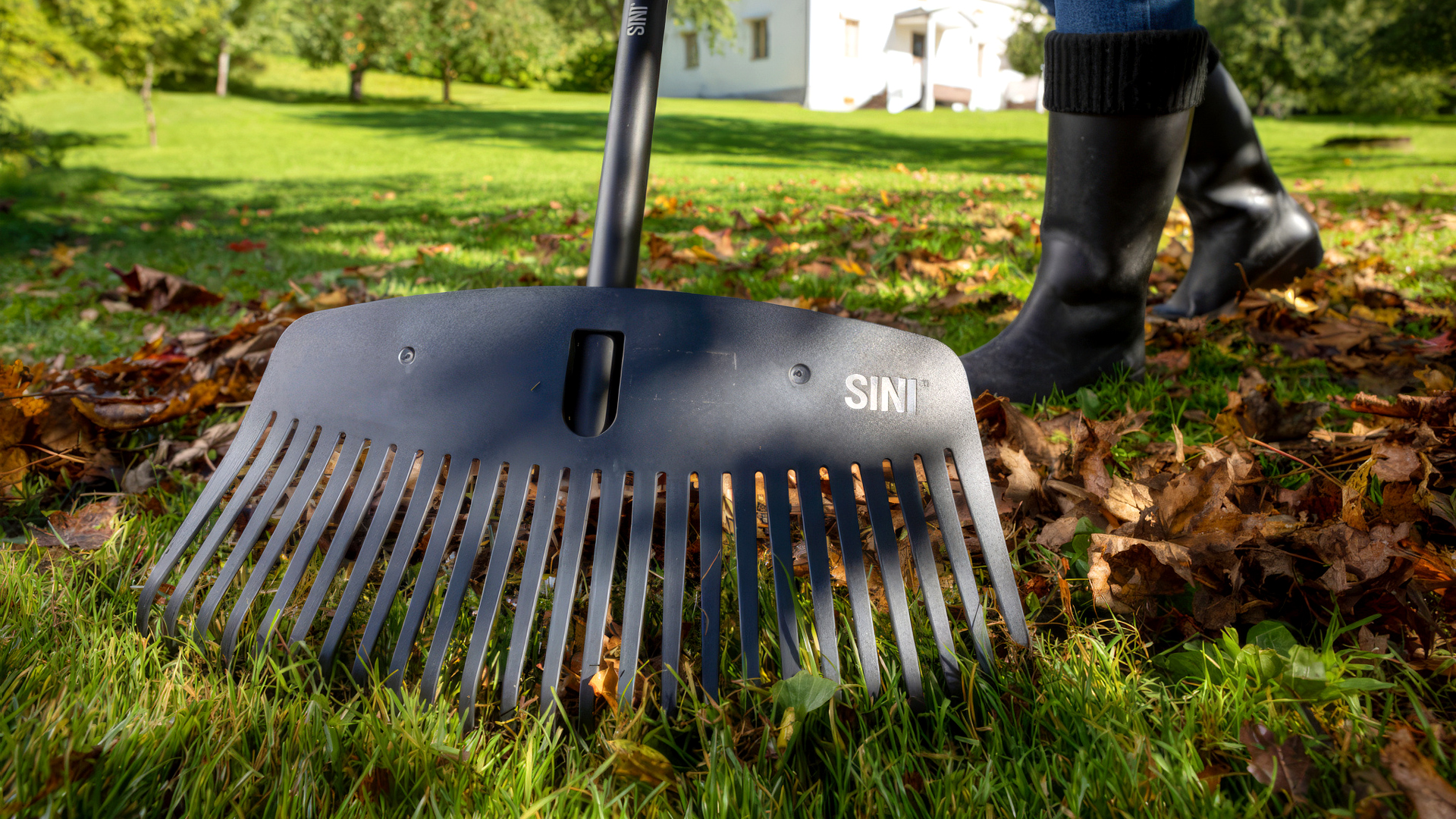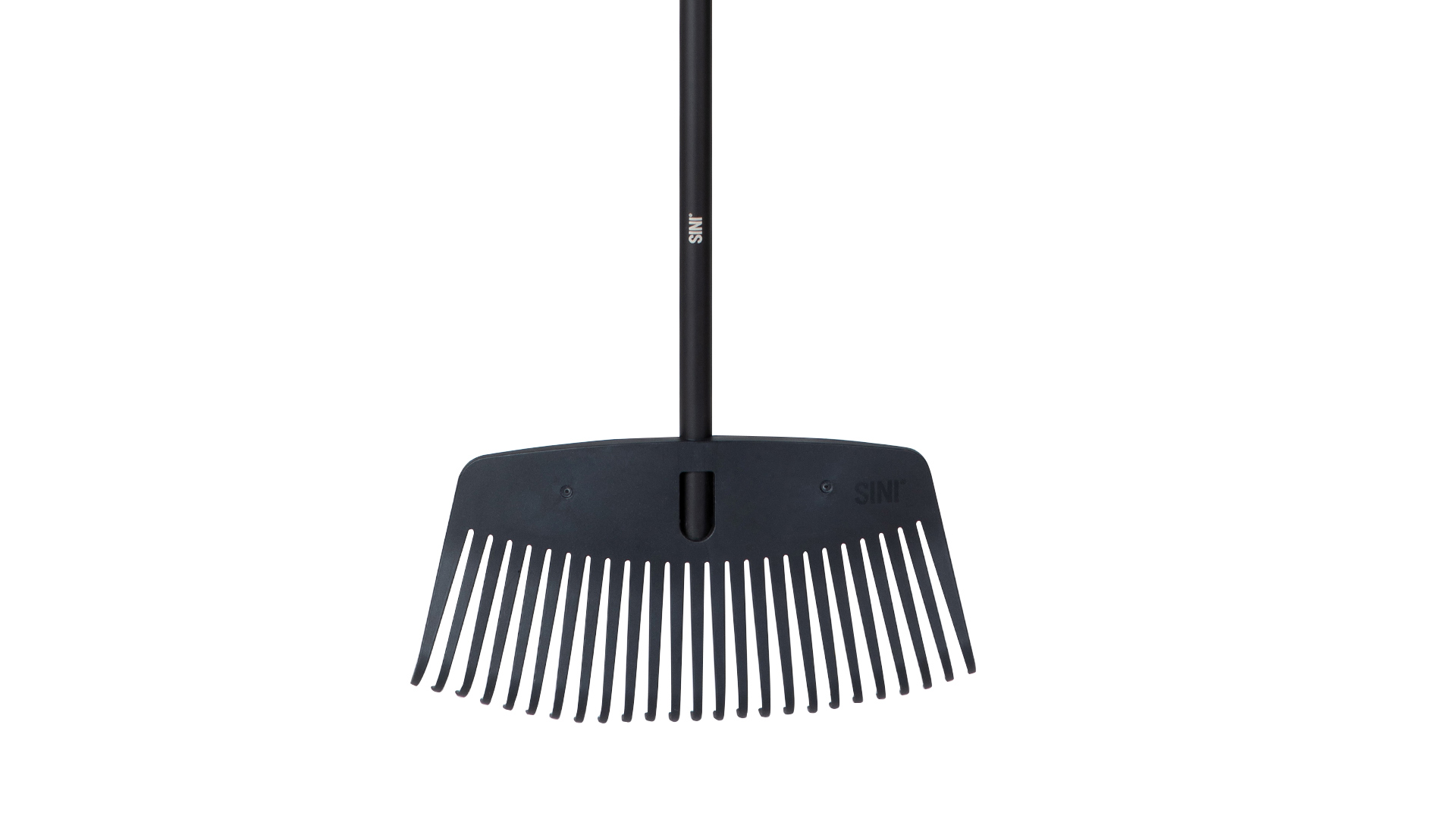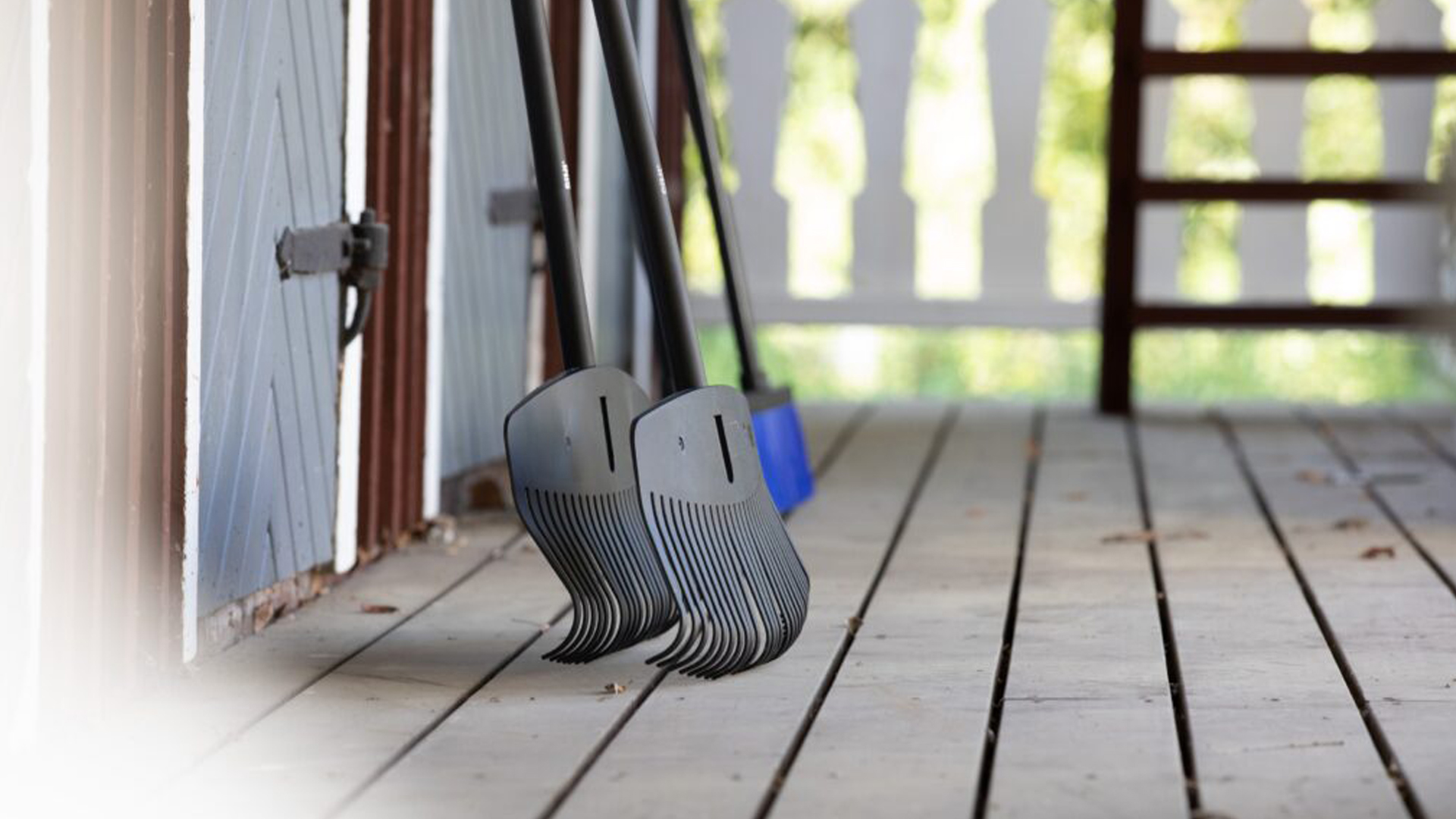At first glance the rake might seem quite ordinary. In actuality, however, designing an elegant and functional rake that can be cost-effectively manufactured requires understanding of technologies, materials and production methods – in addition to a mastery of ergonomics and aesthetics.
The SINI Rake is a newcomer to Sinituote’s family of outdoor products. Nothing was left to chance in the rake’s design as one can only make a good first impression once.
The rake is a seemingly simple product that consists of a shaft and an injected-moulded plastic rake head. However, designing the functional and beautiful rake that is effortless to manufacture was a multifaceted process that involved both modern technology and traditional testing of prototypes.
What makes a good rake?
A good product stands out in a positive way, so aesthetics was a central focal point in the design of the SINI Rake. The goal was to achieve the signature look and recognisability of SINI products.
However, even the most elegant product is useless if it does not work. Indeed, the design project began with a deep dive into what makes a good rake. What is it like to use? How can the best possible ergonomics be achieved? What about fabricability?
The requirements set for products are often quite contradictory. For example, the rake head and its spikes should be both stiff and flexible enough at the same time. If the spikes are too flexible, the body of the rake head gets pressed too low to the ground, hindering the spikes’ ability to move leaves effectively. If the spikes are too stiff, however, they do not follow the contours of the terrain, forcing the user to use more force to achieve the desired result. The entire rake, head and all, must also be as lightweight as possible while withstanding heavy use and wear and tear.
Testing, computational analyses, simulations and topology optimisation
The functionality and ergonomics of the SINI Rake were developed by tests with printed prototypes and utilising computational analyses and topology optimisation. Simulations were used to ensure good fabricability.
Printed prototypes were tested on numerous occasions during the project to find the best possible stiffness-to-flexibility ratio for the rake head and its spikes. In addition to tests, the way the spikes bend was also analysed computationally as the rake needs to be suitable for a wide variety of surfaces. The ground under the spikes might not always be a pristine lawn, for example, but there might also be rocks and root systems on the surfaces.
Topology optimisation was also utilised in the SINI Rake’s design. In plain English this means using computational means to define the sections of the rake where material needs to be added and in what shapes to ensure that material is used as little as possible while fulfilling the strength requirements set for the product.
Before producing the manufacturing tools, thorough simulations were also conducted on the rake heads to ensure that the molten plastic material fills the mould in a controlled way during the process before it cools so that some of the spikes are not left too short, for example. Another purpose of the simulations was to ensure that the products come out of the mould as they should and that they do not bend out of shape while cooling, for example.
Shaft and the finishing touches
When the rake is light in weight, work ergonomics are improved and stress is reduced, which meant lightweight yet sturdy aluminium tube was chosen as the material for the shaft. The shaft has a matte coating for a good grip that also gives the rake a stylish modern look. The shaft can be equipped with two replaceable rake heads of different widths depending on the size of the yard and the user’s raking habits.
As the cherry on top, the end plug of the shaft was shaped to fit the rake.
Ultimately, functionality was confirmed at the factory
The computations, simulations and tests with prototypes took us relatively close to the characteristics and behaviour of the final product. However, true confirmation of the product’s functionality could only be ascertained once we got to test the final products that were made in real manufacturing conditions. The product and its features are refined to their final form when they are made using the actual tools and production-grade materials, and once the production process and the moulding parameters have been fine-tuned to perfection.
Our thorough planning and careful preliminary work paid off. The rake looks great and its functionality exceeded expectations.
Learn more about our industrial design and product development services.



